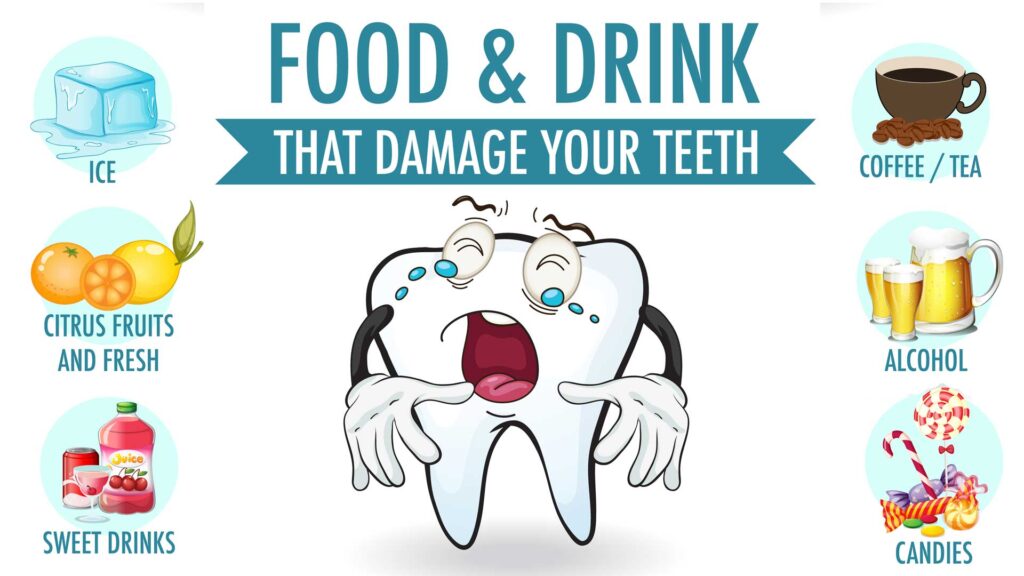What is Dentin/Tooth Hypersensitivity?
Dentin hypersensitivity, often described as a short, sharp pain originating from exposed dentin in response to stimuli, is a common dental issue. The condition can significantly affect the quality of life, impacting routine activities such as eating, drinking, and even breathing cold air. This article explores the causes, symptoms, diagnosis, and management of dentin hypersensitivity.
How does Dentin Hypersensitivity occur?
Dentin hypersensitivity occurs when the dentin, the layer beneath the enamel, becomes exposed. This exposure can be due to enamel erosion or gum recession, which leaves the underlying dentinal tubules unprotected. These tubules contain fluid-filled channels that connect to nerve endings within the pulp. External stimuli, such as hot, cold, sweet, or acidic substances, cause fluid movement in the tubules, triggering nerve responses that result in pain.
What are the Causes of Dentin Hypersensitivity?
- Enamel Erosion:
Acidic foods, beverages, and improper brushing techniques can erode enamel, exposing the dentin. - Gum Recession:
Periodontal disease and aggressive brushing may lead to receding gums, exposing the root surfaces. - Tooth Whitening Treatments:
Certain bleaching agents can temporarily increase dentin sensitivity. - Bruxism (Teeth Grinding):
Grinding teeth can wear down enamel, exposing the dentin. - Dental Procedures:
Treatments like scaling, root planing, and restorations may inadvertently cause dentin sensitivity.
What are the symptoms of Tooth Hypersensitivity?
- Sharp, transient pain in response to external stimuli.
- Discomfort triggered by hot, cold, sweet, or acidic foods and beverages.
- Sensitivity during brushing or flossing.
How to Diagnose Tooth Hypersensitivity?
Proper diagnosis involves a thorough clinical examination and patient history. Dentists may use the following methods:
- Visual Inspection:
Look for signs of enamel loss or gum recession. - Percussion Test:
Gently tapping the tooth to rule out other causes of pain, such as pulpitis. - Thermal or Evaporative Stimuli Tests:
Using cold air or water to identify sensitive areas. - Radiographs:
X-rays help identify structural issues or caries contributing to the pain.
How to Manage and treat Hypersensitivity?
The management of dentin hypersensitivity involves addressing the underlying cause and alleviating symptoms.
- Desensitizing Agents:
- Fluoride: Strengthens enamel and reduces tubule permeability.
- Potassium Nitrate: Blocks nerve responses, reducing pain perception.
- Strontium Chloride: Seals tubules to prevent fluid movement.
- Oral Hygiene Practices:
- Use a soft-bristled toothbrush.
- Avoid aggressive brushing techniques.
- Use toothpaste formulated for sensitive teeth.
- Dietary Modifications:
- Limit acidic foods and beverages.
- Rinse with water after consuming acidic substances.
- Professional Interventions:
- Fluoride Varnishes: Applied in-office to provide a protective barrier.
- Bonding Agents: Seal exposed dentin and reduce sensitivity.
- Gum Grafting: Covers exposed root surfaces in severe cases.
- Behavioral Changes:
- Use a nightguard if bruxism is present.
- Adopt stress-reducing techniques to minimize teeth grinding.
How to prevent Hypersensitivity?
Prevention plays a crucial role in managing dentin hypersensitivity.
- Maintain good oral hygiene using non-abrasive products.
- Regular dental checkups to identify early signs of enamel erosion or gum disease.
- Avoid acidic and sugary foods, and use straws to limit contact with teeth.
Conclusion
Dentin hypersensitivity, a common yet manageable condition, can be effectively addressed with the right care. Early detection, lifestyle changes, and professional treatments can greatly alleviate discomfort and enhance overall oral health. If you’re experiencing persistent sensitivity, it’s crucial to consult a dentist to identify the root cause and explore personalized treatment options. For the highest level of care, visit Gentle Dental Care, where our expert clinicians offer top-quality service to safeguard your dental health.


